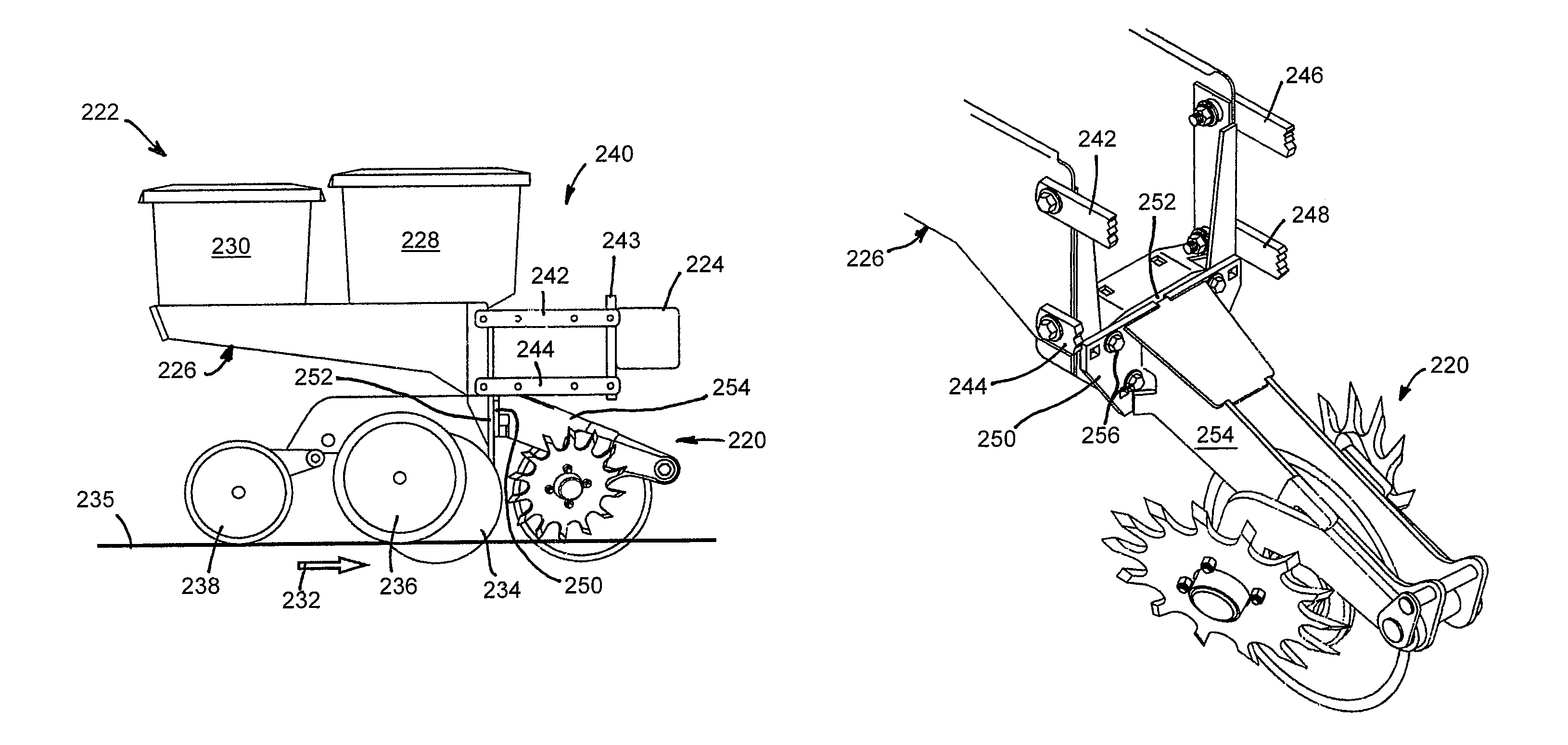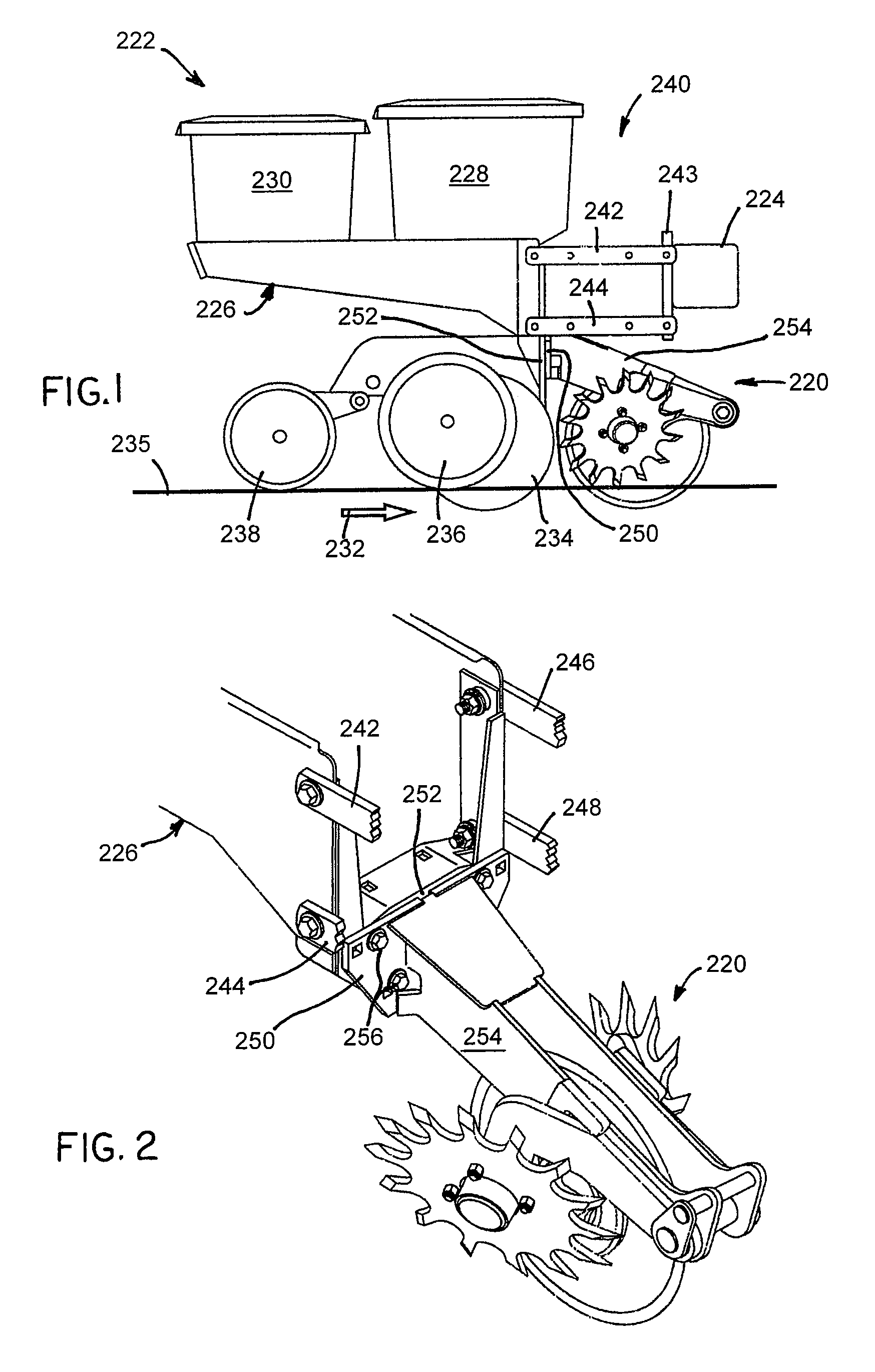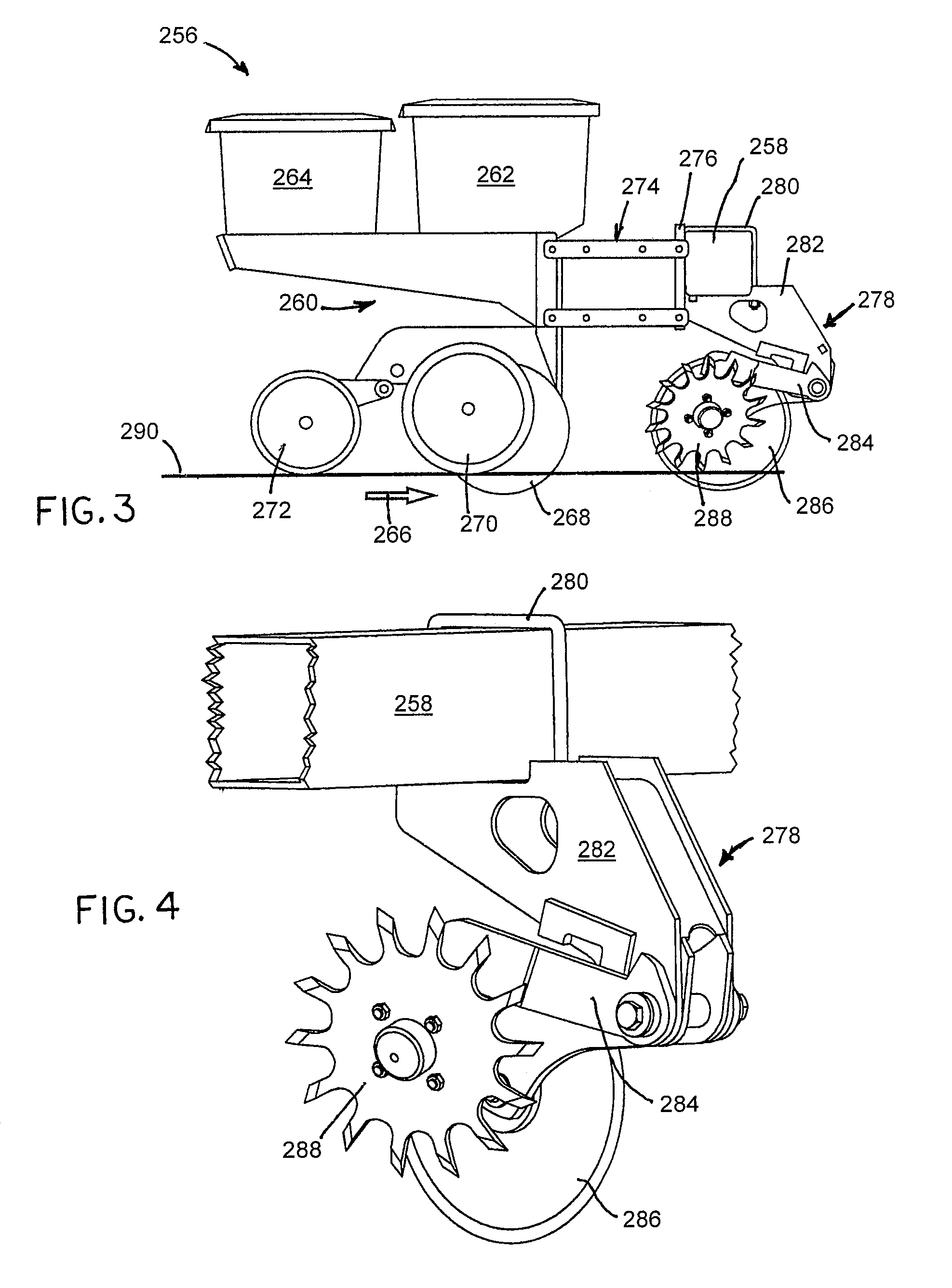Crop residue clearing device
a technology of crop residue and clearing device, which is applied in the field of agricultural implements, can solve the problems of increasing erosion, less amenable, and high cost of approach, and achieves the effects of reducing soil penetration, reducing soil damage or destruction, and reducing crop debris
- Summary
- Abstract
- Description
- Claims
- Application Information
AI Technical Summary
Benefits of technology
Problems solved by technology
Method used
Image
Examples
Embodiment Construction
[0029]Referring to FIG. 1, there is shown a side elevation view of a conventional planter unit 222 to which is directly mounted the crop residue clearing device 220 in accordance with one embodiment of the present invention. FIG. 2 is an upper perspective view of the mounting arrangement for attaching the crop residue clearing device 220 to a forward portion of the planter unit 222. Planter unit 222 may include many elements, but for purposes of describing the present invention, the planter unit is shown as including a frame 226 to which are mounted a seed hopper 228, an insecticide hopper 230, and plural ground engaging members. The illustrated ground engaging members include a pair of laterally spaced furrow opening discs (where one disc is shown as element 234), plural gauge wheels (where one gauge wheel is shown as element 236), and a trailing furrow closing wheel 238. All of the aforementioned ground engaging members either ride on the surface of the soil 235, or penetrate the ...
PUM
 Login to View More
Login to View More Abstract
Description
Claims
Application Information
 Login to View More
Login to View More - R&D
- Intellectual Property
- Life Sciences
- Materials
- Tech Scout
- Unparalleled Data Quality
- Higher Quality Content
- 60% Fewer Hallucinations
Browse by: Latest US Patents, China's latest patents, Technical Efficacy Thesaurus, Application Domain, Technology Topic, Popular Technical Reports.
© 2025 PatSnap. All rights reserved.Legal|Privacy policy|Modern Slavery Act Transparency Statement|Sitemap|About US| Contact US: help@patsnap.com



